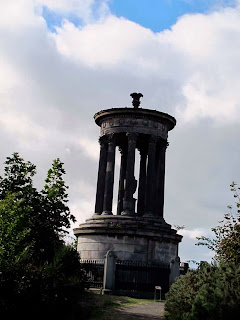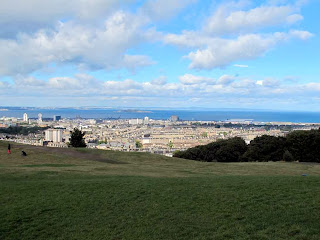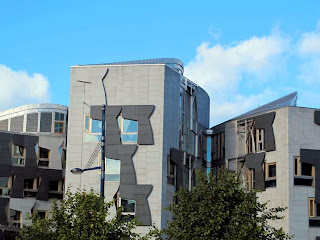Edinburgh is Scotland's capital and second largest city, it is one of Europe's largest financial centres. Edinburgh was the hub of the Scottish Enlightenment of the 18th century, which transformed Scotland into one of the commercial, intellectual, and industrial powerhouses of Europe. Glasgow, Scotland's largest city, was once one of the world's leading industrial cities and now lies at the centre of the Greater Glasgow conurbation. Scottish waters consist of a large sector of the North Atlantic and the North Sea, containing the largest oil reserves in the European Union. This has given Aberdeen, the third-largest city in Scotland, the title of Europe's oil capital.
I fell in love with Edinburgh and if is wasn't for the fact that it gets so hectically cold, I would move here tomorrow. Its a city but it doesn't have that feel of a city like London, Hong Kong or Kuala Lumpur. I think it has to do with the architecture and just the timelessness the city portrays.
Even though London also has its beautiful old buildings they are dispersed and there are lots of modern architecture in between. In Edinburgh it is just block on block of buildings that must date from as early as the 12th century. It gives you a sense of history and you almost expect a aristocrat in a red cape and white wig to come around the corner in his golden carriage at any moment.
A beautiful rich city in which I would like to come and explore allot more than what we had time for on this visit to the UK.
Deciding it is way too cold, so ran into the nearest Marks & Spencers to buy a set of gloves and a scarf for both me and Dru.
The Edinburgh Castle with its Roman Architecture.
Entertainment on every street.
The Royal Mile with its cobbles streets, where I found the most beautiful cashmere scarfs. I couldn't contain myself.
Dru and I went on a Auld Reekie tour of the city wynds and vualts where we learned that a four hundred year old building called the Old Tolbooth stood in the city, but was demolished in 1817. The building held the Parliament of Scotland and then became a location for the city courts, chamber council, and prison. Executions would take place on the property right outside the Old Tolbooth entrance where the Heart of Midlothian now lies. This heart is a stone design within the cobblestone street in Parliament Square and is a place where people can visit the site of these executions. It is believed that if you spit within the Heart of Midlothian it would bring you good luck.
How cute is this building with one half of the cow on each side
The Whiskey tasting!!!! MMMMMMmmmmmmmmm! I have never seen so many whiskey's under one roof. At the price you can only sample a few drams, but trust me 100% worth every cent. I opted to try only one for the day seeing as it was only about noon when we got there and we still had a whole days touring ahead of us.
After that one I was quite glad I didn't order a second one, those single malt 35 year oldie's can knock you off your feet :)
The Nelson Monument
This monument was inspired by vice admiral Horatio Lord Nelson's victory and death at the battle of Trafalgar on 21s October 1805.
A circular signal tower in the style of a naval spy glass, built of Craigleigh sandstone and designed by Robert Burn. The foundation stone was laid in 1807, and the monument completed in 1815.
In 1852 a mechanised time-ball was installed on top which drops daily at 1pm - synchronised with the one o'clock gun firing from Edinburgh Castle. These are accurate visible and audible signals which allow ships in Leith harbour to set their chronometers, as an aid to navigation. The base of the monument stands 456 feet above sea-level, and the top of the tower is another 106 feet high, allowing an excellent panoramic view.
"To the memory of Vice Admiral Horatio Lord Nelson, and of the great victory of Trafalgar, too dearly purchased with his blood, the grateful citizens of Edinburgh have erected this monument: not to express their unavailing sorrow for his death; nor yet to celebrate the matchless glories of his life, but by his noble example to teach their sons to emulate what they admire, and like him, when duty requires, to die for their country. MDCCCV (1805).
Above the entrance is Nelson's crest - "Upon waves of the sea, the stern of a Spanish man of war, inscribed "San Josef." (The San Josef was captured by Nelson at the Battle of Cape St. Vincent in 1797.)
Naval signal flags are hung here every year on the 21st of October signalling "ENGLAND EXPECTS EVERY MAN TO DO HIS DUTY"























































































No comments:
Post a Comment